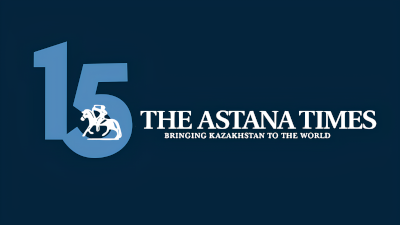ASTANA – Renewable energy generation reached 6.43% in Kazakhstan in 2024, surpassing its 2025 target a year ahead of schedule. As Kazakhstan pushes ahead with its green transition, renewables are not only reshaping the energy system by exposing its critical weaknesses but also challenging long-standing industry mindsets, said Qazaq Green Renewable Energy Association Chairwoman Ainur Sospanova in a recent interview with The Astana Times.

Ainur Sospanova leads the association. It was created in 2018 to support the development of renewable energy sources in Kazakhstan. Photo credit: qazaqgreen.com
Green transition on the march
According to January figures from the Kazakh Ministry of Energy, Kazakhstan’s total installed capacity reached 3.03 gigawatts (GW) in 2024. Wind power plants generated the largest share, 1.52 GW, followed closely by solar power plants, with 1.22 GW. Small hydropower plants contributed 287.7 megawatts, while bioelectric power remained marginal at just 1.77 megawatts.
“Progress is good. Now, all stakeholders in the process understand the benefits of using renewable energy. Fifteen years ago, when we were just beginning to develop renewables, few people grasped its significance—it seemed like the initiative of a small group of enthusiasts who were setting goals and explaining why we needed it. Today, there is no longer any need to explain its purpose to anyone,” said Sospanova, who has been working in the renewable energy industry for more than 10 years and was at the forefront of developing the renewable energy legislation.
Kazakhstan aims to have 15% of its electricity generated by renewables by 2030 and 50% by 2050. Sospanova said the first steps are always the most challenging.
“After that, technological barriers decrease, and costs of production decline. We can say that the energy sector is getting into the taste of renewable sources,” said Sospanova.
Weak spots
Sospanova said rolling out of renewables in Kazakhstan exposed multiple weak spots in the country’s energy system, with most of the electricity infrastructure carrying the legacy of the Soviet Union. These include aging infrastructure, limited transmission capacity, worn-out grids, and outdated operational methods used by system operators, grid companies, and power plants.
“We understand that certain industries, such as aluminum production and mining and metallurgy, are heavily dependent on electricity. The economics of these projects have been closely tied to low electricity tariffs. And why were tariffs so low? Because power plants built during the Soviet era had already paid for themselves. The raw material base was right underfoot—cheap coal extracted through open-pit mining, like in Ekibastuz [a town in northeastern Kazakhstan],” she said.
Sospanova said that during the Soviet Union, no one discussed social impact, environmental consequences, or public health.
“But the reality is that cheap electricity came at a high cost—severe environmental degradation in the regions and serious harm to people’s health,” she added. “For example, whenever I visit Ekibastuz, I constantly get headaches—even back when I wasn’t involved in environmental issues. At the same time, the Ekibastuz coal basin powers two of the country’s largest power plants: Ekibastuz GRES-1 [coal-fired thermal power station] and GRES-2.”
The old way of doing business
Introducing renewables challenged the old ways of doing business in the energy system. Sospanova noted that new methods of work are needed at all levels. It is about integrating renewables into the existing power grids and addressing the intermittent nature of solar and wind power.
“They [plants] were designed for traditional power generation—coal and gas. You throw in coal, get energy, and that’s it. (…) But now, new sources of generation are emerging—solar and wind power stations—which are bringing serious changes to the system. Unlike coal or gas plants, these are not as stable,” she said.
“A lot of changes are needed in the regulations, as well as in the interaction within the energy system,” she added.
While engineers and traditional energy specialists were not immediately ready to embrace the new technologies, Sospanova acknowledges a shift in their perspective.
“Over the past 10 years, very few traditional power plants have been commissioned, while three gigawatts of renewable energy have been introduced. This has helped mitigate the growing energy deficit, which continues to increase due to rising consumption, the emergence of new industries, and overall economic growth,” she said.
Barriers to scaling up renewables
Sospanova noted that 2024 saw some milestone renewable energy projects. It includes an agreement with Abu Dhabi-based Masdar company to build a 1 GW wind power plant in the Zhambyl Region and an intergovernmental agreement with China to construct renewable energy facilities with a total installed capacity of 1.8 GW.
“I believe expansion will continue, but the infrastructure remains underprepared for this transition. Much work lies ahead, and KEGOC [Kazakhstan Electricity Grid Operating Company] is already addressing these challenges. They are working on projects with the Asian Development Bank and the European Bank for Reconstruction and Development to strengthen the southern energy system. There is a project [of EBRD] to connect the western energy zone with the central one,” said Sospanova.
She explained that Kazakhstan’s western electric power system is isolated from the country’s Unified Power System and is linked only via Russia. The goal is to integrate the two isolated energy systems.
“This will be a serious progress forward for the future integration of renewable energy. Why? Because the central zone has limited flexible sources and only a few hydropower plants available. Large hydropower stations are needed to balance [supply in the grid], like those with significant reservoirs, such as Oskemen and Shulbinsk. Alternatively, gas-fired power plants can also help, but the majority of gas power plants are located in the western zone,” she explained.
Increasing local content
Sospanova also called for increasing local content in the renewable energy projects implemented by major foreign companies, including those by ACWA Power, Masdar and Total. She believes posing such demands is politically sound and economically justified.
“Because then these projects will have an effect – the deployment of production and factories, jobs will be created, and in general, there will be more value from these projects. Any production means jobs and tax revenues,” she added.
Low tariffs
Sospanova explained that Kazakhstan’s electricity remains cheap mainly due to subsidies in the fossil fuel sector.
“If you ask the Ministry of Economy, they will say there are no subsidies. But even the transportation of coal from mines to power plants is subsidized— KTZ [Kazakhstan’s national railway company] moves coal at a very low rate, often below cost. This is a form of subsidy,” said Sospanova.
According to her, when new coal, gas, and renewable energy plants are compared under the same conditions, factoring in environmental requirements, renewables could be more cost-effective.
She said many of Kazakhstan’s aging coal plants from the Soviet era have long repaid their loans, which means their costs are limited only to operational expenses. While this may position them as cheaper, the gap is narrowing.
“If you look today at the maximum tariffs for traditional power stations, approved regularly by the Ministry of Energy, and the auction results for renewable energy projects, you will see that renewable energy tariffs may be slightly higher than those of old coal and gas plants that have already paid off their initial investments,” said Sospanova.
Overall, she commended the country’s renewable energy support system. Under this system, investors are offered a 20-year contract at the auction-winning tariff.
“The Ministry of Energy sets an upper auction price limit—for example, in previous years, the cap was 34 tenge [US$0.067] for solar power and 22.68 tenge [US$0.045] for wind energy. This is the maximum price we offer investors,” she said. “Under these conditions, investors participate in auctions, and the winner is the one offering the lowest tariff.”
The tariff is fixed for 20 years and adjusted annually based on an investor’s chosen indexing method. It could be either inflation or the dollar’s exchange rate.
“Strong participation of investors in these auctions demonstrates confidence in Kazakhstan’s investment climate and renewable energy support system,” she said. “The support system is very good. It is not without flaws, but it is a dynamic mechanism that continues to evolve.”
Political stability is another factor that pulls investors in.
“Whatever can be said, but the country offers a reliable investment climate. Investors believe that by putting in their money, they will not only recoup their project over 20 years but also generate profit—all while offering competitive tariffs,” she said.
Sospanova is optimistic about the country’s potential to become a green energy hub. Political will and skilled professionals are all it needs to achieve the target.
Kazakhstan’s green push comes amidst a global surge in renewable energy rollout. In its Renewables 2024 report, the International Energy Agency projects global renewable energy capacity will grow by over 5,500 GW between 2024 and 2030—nearly three times the expansion recorded from 2017 to 2023. In 2025, renewables-based electricity generation is set to overtake coal-fired generation.


